Introduction of Road Pattern
Important Point
However, recent development in cities does not give importance to the study of the road patterns, sometimes referred to as road pattern in highway engineering, that give rise to numerous roads that are not interconnected, housing schemes, and commercial developments built far away from where roads are very distant from the centre of the town.
The increasing distance between the residential and commercial hub of the city increases the dependency upon cars for the daily travel chores each household member makes frequently.
The roadway patterns also increase the response time the emergency response vehicles take to reach a certain place.
There are different types of road pattern used in highways, when the road is constructed in a pattern like rectangular pattern, radial pattern, hexagonal pattern, etc. for proper management of traffic it is called a road pattern.
The roadway patterns also increase the response time, the emergency response vehicles take more time to reach a certain place.
Also, Read: Fish Ladder | What Is Fish Ladder | Types of Fish Ladder | Fish Ladders in Dams
What Is Road Pattern?
Different Types of Road Patterns
- Rectangular or Block Pattern
- Radial Pattern
- Radial or Star & Block Pattern
- Radial or Star & Circular Pattern
- Radial or Star & Grid Pattern
- Hexagonal Pattern
- Minimum Travel Pattern
- Grid Pattern
1. Rectangular or Block Pattern
In this street patterns type, the whole area is divided into rectangular blocks of plots, with streets intersecting at right angles. This is often referred to as the what is grid pattern.
The main road, which is a part of the chandigarh road pattern, passes through the centre of the area should be sufficiently wide, and other branch roads may be comparatively narrow.
The main road is provided with a direct approach to outside the city. This pattern has been adopted in the city roads of Chandigarh.
Pros of Rectangular or Block Pattern
- The rectangular plots may be further divided into small rectangular blocks for the construction of buildings placed back to back, having roads on their front.
- This pattern has been adopted for the city roads.
- The construction and maintenance of roads of this pattern are comparatively easier.
Cons of Rectangular or Block Pattern
- This pattern is not very much convenient because at the intersections they are perpendicular, thus the vehicles face each other resulting in accidents.
2. Radial Road Pattern
In this what is a radial street pattern, the network of roads is in the form of circles, often referred to as radial road meaning, emanating from the centre of the area.
The paradigm of a radial pattern can be found at the Federal B Area of Karachi.
This pattern may be further classified into three types depending on its layout.
2a. Radial or Star & Block Pattern
This type of network is a combination of radial and block pattern of roads.
The entire area is divided into a radial network of roads radiating from the centre outwardly with block pattern network of roads in between the radial main streets.
Pros of Radial or Star & Block Pattern
- Less risky compared to a rectangular pattern.
- It reduces the level of congestion at a primary bottleneck location.
- If one radial road is blocked then another can be used as an alternative.
Cons of Radial or Star & Block Pattern
- Lack of safety appurtenances like rail transitions, crash attenuators and post support bases.
- It is only effective when two-lane ramp traffic does not have to merge at the downstream end of the ramp.
Also, Read: What Is a Low E Glass | Types of Low E Glass | Advantages & Disadvantages of Low E Glass
2b. Radial or Star & Circular Pattern
This type of network is a combination of radial and circular pattern of roads.
Here main roads radiate from a central point and are connected with concentric circle roads (ring roads) radiating outwardly.
Pros of Radial or Star & Circular Pattern
- It is safe as compared to the above patterns because vehicles travel in the same direction.
- Roundabouts present in this pattern improves the efficiency of traffic flow. This also reduces fuel consumptions and emissions of the vehicle.
- Reduces the possibility of rear-end crashes.
Cons of Radial or Star & Circular Pattern
- Providing good curve is quite challenging.
- It affects the driving ability (mainly old drivers face this problem due to a decrease in vision).
- It is necessary for the proper provision of the traffic signal, road markings and lighting to alert the drivers.
- Splitter islands should be extended far enough to provide crosswalk and describe the roundabout.
2c. Radial or Star & Grid Pattern
This type of network, sometimes known as the star and grid road pattern, is a combination of radial and grid street pattern of roads.
A radial network of road radiates from the centre outwardly. Then the main radial streets are interconnected by providing a grid pattern.
Pros of Radial or Star & Grid Pattern
- It increases the efficiency of land usage and unit density.
- It improves the traffic flow in both directions utilizing Savannah’s cellular structure.
- It provides high safety to vehicular traffic with a high proportion of 3-way intersections.
- It reduces the cut-through traffic.
Cons of Radial or Star & Grid Pattern
- Splitter islands should be extended far enough.
- High construction cost for extra road markings and signals.
3. Hexagonal Road Pattern
In this pattern, a network of roads grows in such a manner that they form hexagons.
Three roads meet the built-up area boundary by the sides of the hexagons at every corner which can be further divided in suitable sizes.
Pros of Hexagonal Road Pattern
- Three roads meet the built-up area boundary by the sides of the hexagons.
Cons of Hexagonal Road Pattern
- Traffic signs, pavement markings, and lighting should be adequate so that drivers are aware that they should reduce their travel speed.
4. Minimum Travel Pattern
In this pattern that is also known as a “minimum travel pattern”, the road pattern grows linearly in one direction possible (straight roads), also known as the minimum travel road pattern, only due to the presence of some adjacent natural forces like sea or ocean on one side of the city. These are short roads.
Pros of Minimum Travel Pattern
- These types of potentially serious crashes essentiall0y are eliminated.
Cons of Minimum Travel Pattern
- Traffic signs, pavement markings, and lighting should be adequate so that drivers are aware that they should reduce their travel speed.
- Intersections can be especially challenging for older drivers.
5. Grid Pattern
A grid street pattern, or simply a grid, is a network of intersecting parallel lines, whether real or imaginary. In the in the grid system the intersection of road at which angle is typically 90 degrees.
In this pattern, streets intersect at right angles and form a pattern of squares when viewed from above. The grid can also refer to a physical network of sorts, not necessarily made of straight or parallel lines.
The grid plan, grid street plan, or gridiron plan is a type of city plan in which streets run at right angles to each other, forming a grid.
The infrastructure cost for regular grid patterns is generally higher than for patterns with discontinuous streets.
Costs for streets depend largely on four variables: street width, street length, block width and pavement width.
Two inherent characteristics of the grid plan, frequent intersections and orthogonal geometry facilitate pedestrian The geometry helps with orientation and its frequent intersections with the choice and directness of route to desired destinations.
Pros of Grid Pattern
- Grids are good for pedestrians because there are many different ways to travel from A to B.
- Grids are good for retail stores and restaurants because they offer a lot of corner lots.
- Navigating a grid is fairly straightforward.
Cons of Grid Pattern
- Grids are bad for drivers and bicyclists because they have a lot of intersections and therefore many potential conflict points.
- Grids can encourage people to use residential streets as shortcuts.
- Grids are a poor fit for cities with a lot of hills because they lead to unnecessarily steep streets.
- An inconsistent or incomplete grid can easily result in traffic chaos.
History of Grid Pattern Road
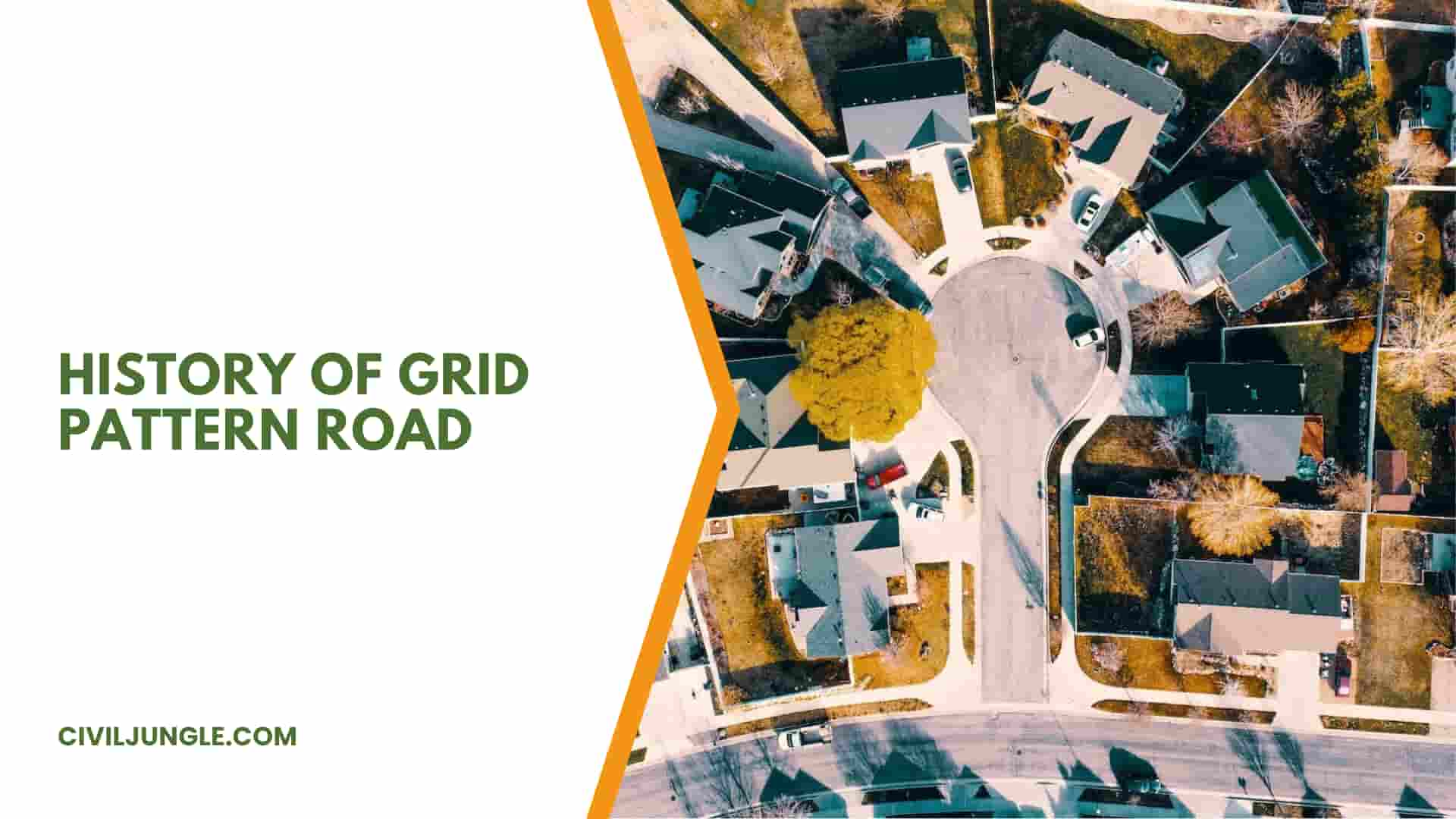
The grid plan dates from antiquity and originated in multiple cultures; some of the earliest planned cities were built using grid plans.
By 2600 BC, Mohenjo-Daro and Harappa, major cities of the Indus Valley Civilization, were built with blocks divided by a grid of straight streets, running north-south and east-west.
Each block was subdivided by small lanes. The cities and monasteries of Sirkap, Taxila and Thimi (in the IndusInd Kathmandu Valleys), dating from the 1st millennium BC to the 11th century AD, also had grid-based designs.
A workers’ village (2570–2500 BC) at Giza, Egypt, housed a rotating labour force and was laid out in blocks of long galleries separated by streets in a formal grid.
Many pyramid-cult cities used a common orientation: a north-south axis from the royal palace and an east-west axis from the temple, meeting at a central plaza where King and God merged and crossed.
Hammurabiking of the Babylonian Empire in the 18th century BC ordered the rebuilding of Babylon: constructing and restoring temples, city walls, public buildings, and irrigation canals.
The streets of Babylon were wide and straight, intersected approximately at right angles, and were paved with bricks and bitumen.
The tradition of grid plans is continuous in China from the 15th century BC onward in the traditional urban planning of various ancient Chinese states.
Guidelines put into written form in the Kaogongji during the Spring and Autumn period (770-476 BC) stated: “a capital city should be square on plan.
Three gates on each side of the perimeter lead into the nine main streets that crisscross the city and define its grid-pattern.
And for its layout the city should have the Royal Court situated in the south, the Marketplace in the north, the Imperial Ancestral Temple in the east and the Altar to the Gods of Land and Grain in the west.”
Teotihuacan, near modern-day Mexico City, is the largest ancient grid-plan site in the Americas. The city’s grid covered 21 square kilometres (8 square miles).
Perhaps the most well-known grid system is that spread through the colonies of the Roman Empire.
The archetypal Roman Grid was introduced to Italy first by the Greeks, with such information transferred by way of trade and conquest.
Road Pattern
There are different types of patterns used in highways, when the road is constructed in a pattern types like rectangular pattern, radial pattern, hexagonal pattern, etc. for proper management of traffic it is called a road pattern. Roadways are very essential in the development of the settlements in a city.
What Is Road Pattern?
When the road is constructed in patterns like rectangular, radial, hexagonal, etc for the proper management of traffic and also to interconnect the branch roads with main roads then it is called road pattern.
Rectangular or Block Pattern
The rectangular/ block/ grid pattern is a plan where the streets and roads are in the form of grids or blocks running perpendicularly into each other thus forming a grid or block. Usually the main road is wide which passes through the centre of the area and other roads connecting to it are narrow.
Also, Read: Cantilever Bridge | Cantilever Bridge Advantages and Disadvantages | Cantilever Bridge Facts
Radial or Star & Block Pattern
It is a combination of star and block pattern. The entire area is divided into a radial network of roads radiating from the centre outwardly with block pattern network of roads in between the radial main streets.
Radial or Star and Circular Pattern
In this system, the main radial roads radiating from a central business area are connected together with concentric roads. In these areas, boundary by adjacent radial roads and corresponding circular roads, the built-up area is planned with a curved block system.
Radial or Star and Grid Pattern
The radial and grid pattern is a combination of radial and grid patterns through which the radial network of roads originates externally from the centre. The main radial roads are interconnected by offering a grid pattern between the principal roads.
Hexagonal Road Pattern
In this pattern, the entire area is provided with a network of roads formatting hexagonal figures. At each corner of the hexagon, three roads meet the built-up area boundary by the sides of the hexagons is further divided in suitable sizes.
Minimum Travel Pattern
In this road pattern, the city is contented by sector centre, suburban centre and neighbourhood centre by the road which required minimum to connect the city centre.
Grid Pattern Definition
A grid is a network of intersecting parallel lines, whether real or imaginary. Most American streets are laid out in a grid pattern, meaning the streets intersect at right angles and form a pattern of squares when viewed from above.
History of Grid Pattern Road
Aurbach traces the origins of grid streets back to the Indus Valley: “By 2600 BC, Mohenjo-Daro in the Indus Valley (present-day Pakistan) was built with blocks divided by a grid of straight streets, laid out in perfect right angles, running north-south and east-west. Each block was subdivided by small lanes.
Like this post? Share it with your friends!
Suggested Read –
Originally posted 2023-08-12 18:00:28.
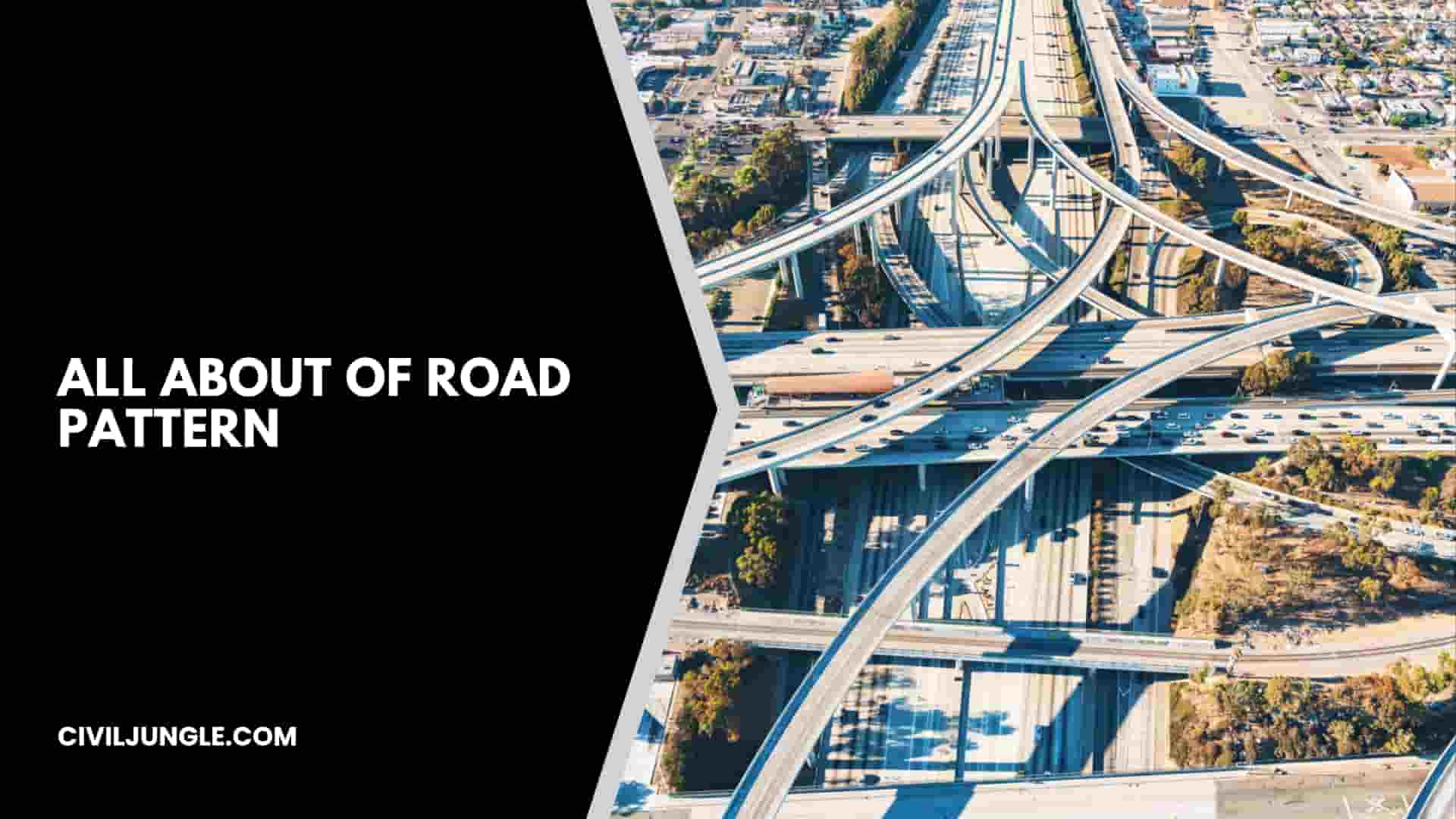
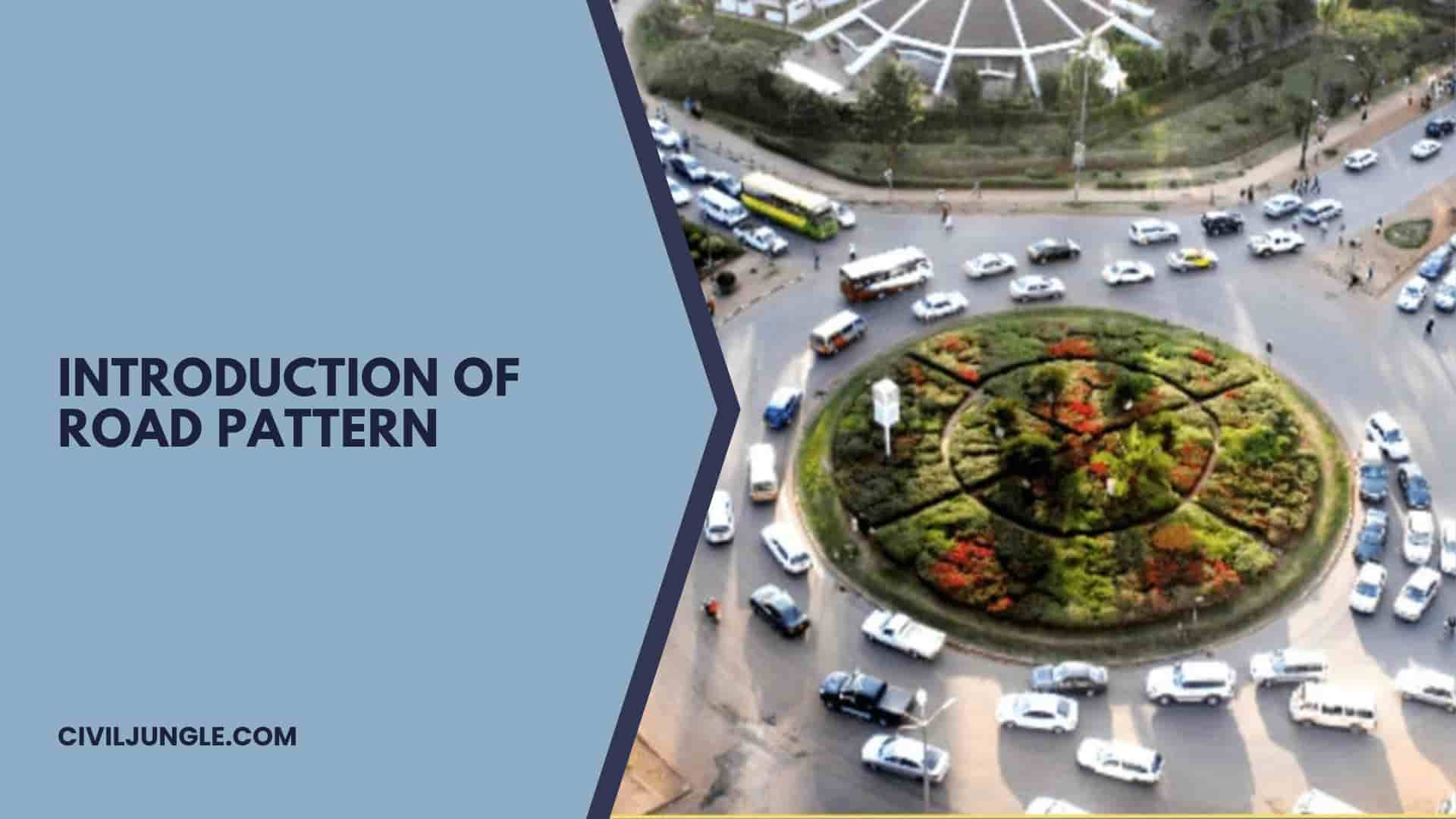
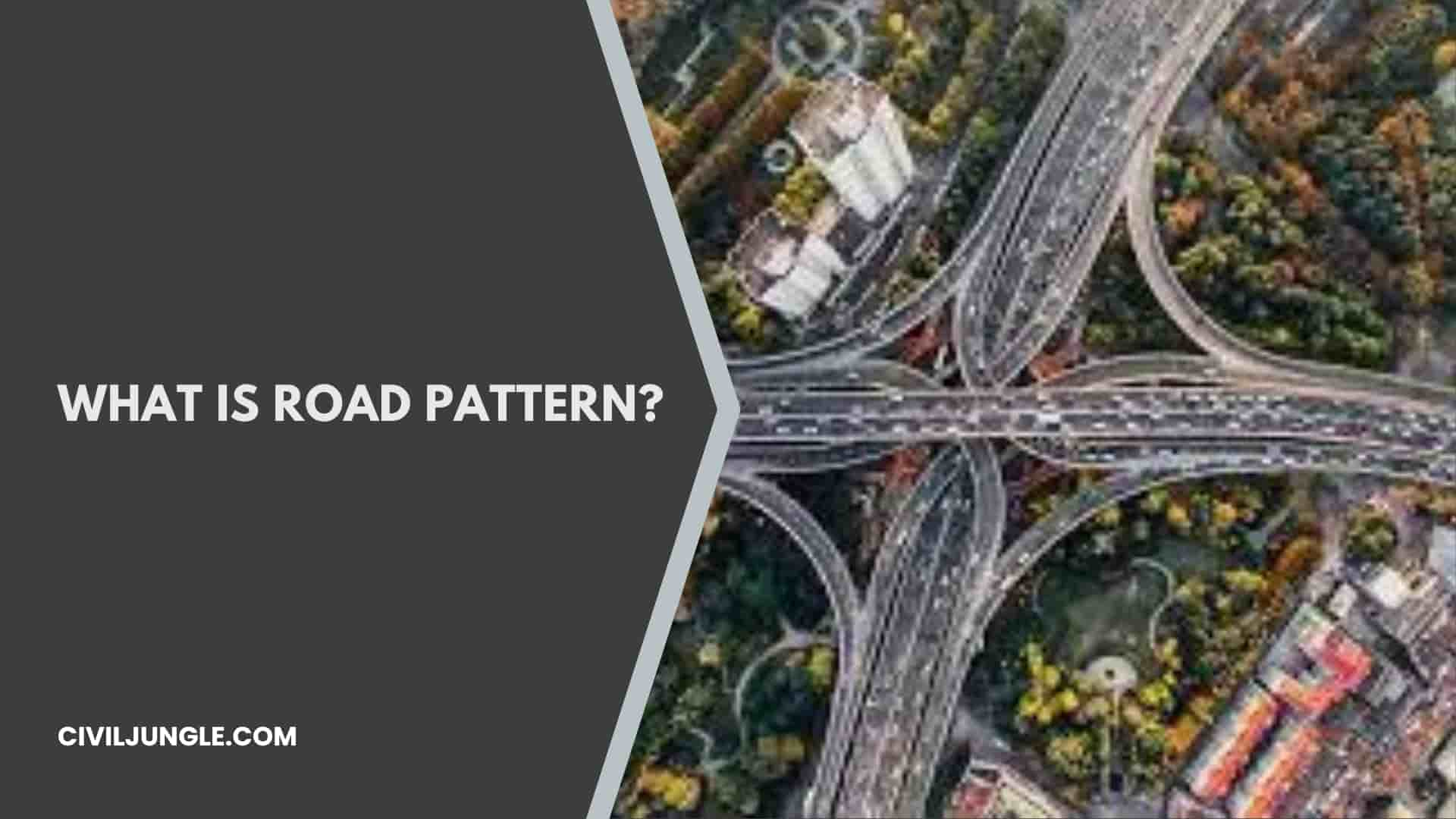
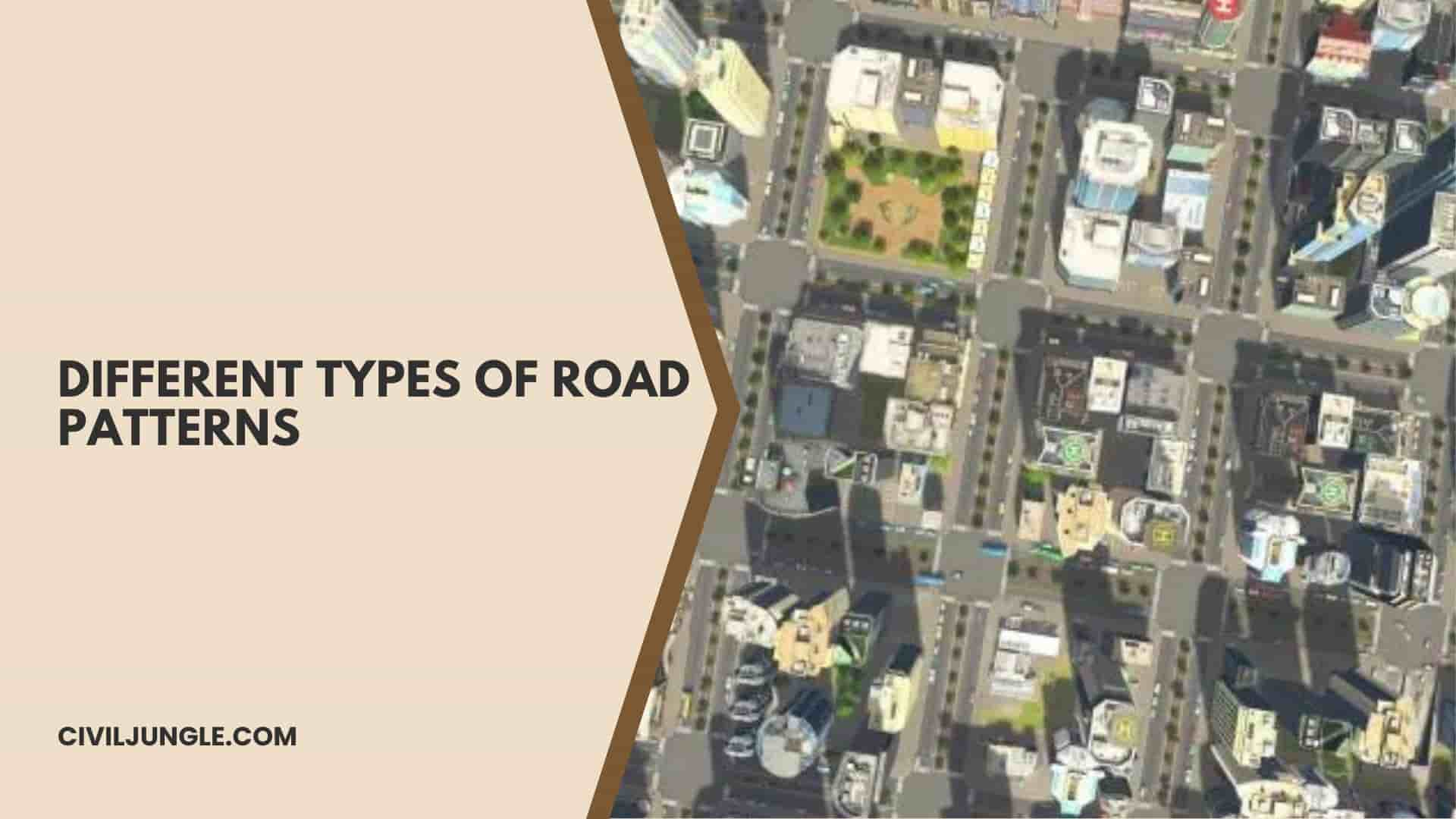
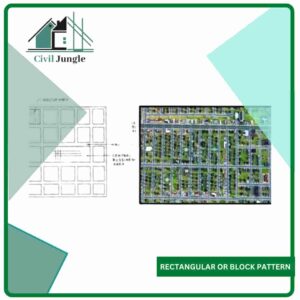
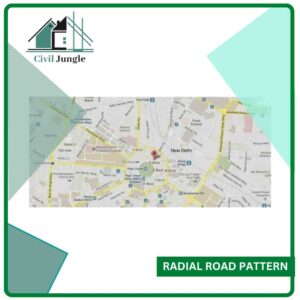
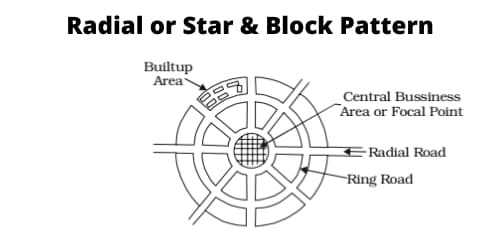
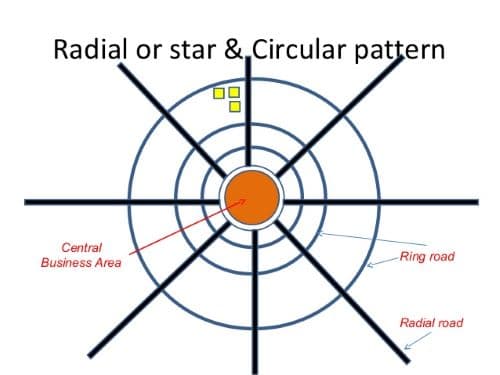
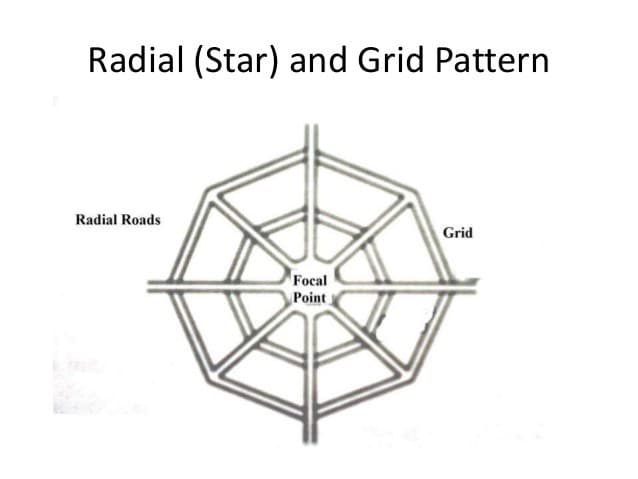
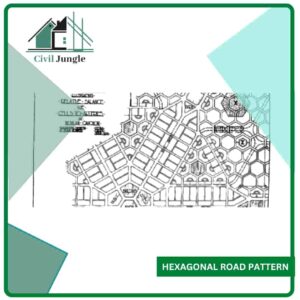
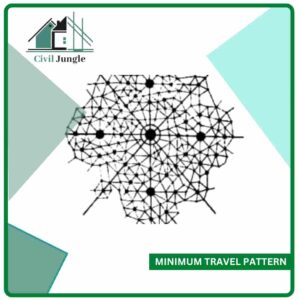
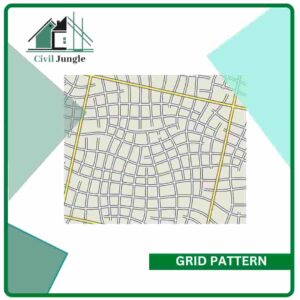

Leave a Reply